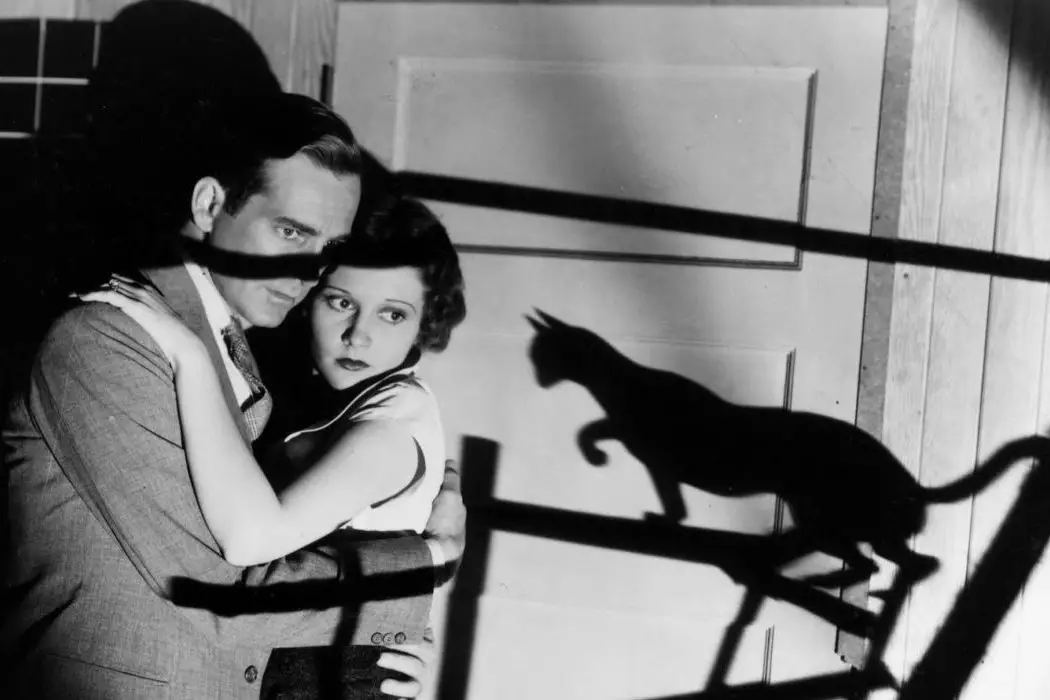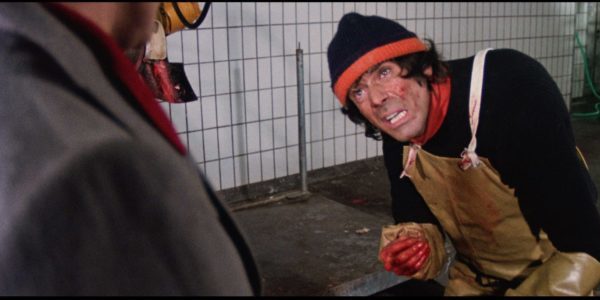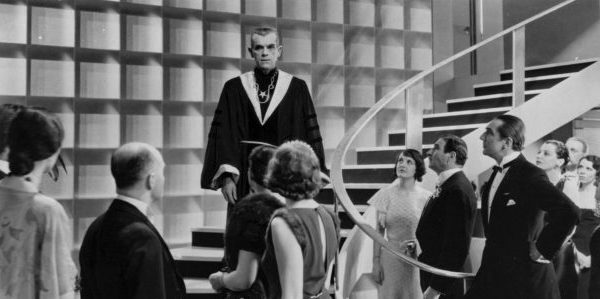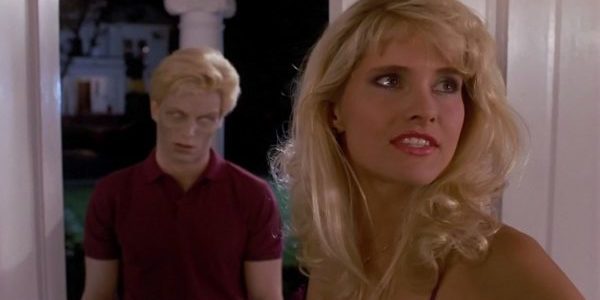Video Dispatches: Universal Horror, THE TOUGH ONES & NIGHT OF THE CREEPS

Midwesterner, movie lover, cinnamon enthusiast.
Video Dispatches is a regular column covering recent home video releases.
The Tough Ones (1976) – Grindhouse Releasing

In 1976, Umberto Lenzi — best known for his contributions to the cannibal, giallo and 007 rip-off genres — made The Tough Ones. Also known under its superior title, Rome, Armed to the Teeth or Brutal Justice, it’s a poliziotteschi riff on Dirty Harry about Inspector Tanzi, who, according to the film’s U.S. poster, made Dirty Harry look like Mr. Clean.
Tanzi (played by the mustachioed Maurizio Merli ) spends the film hunting down a hunchbacked psychotic but, like Dirty Harry, he’s constantly needing, and willing, to circumvent bureaucratic law in order to actually do his job, according to his own understanding of it. However, as Andrew Pragasam wrote, “Whereas Dirty Harry concerns an uncompromising cop protecting society from a psychopath, in Rome, Armed to the Teeth, society is itself psychotic and Tanzi’s solution is unsettlingly close to the final solution: kill everybody.”
But plot is not what anybody comes to Lenzi for. You come for the cheap thrills, exploitation schlock, thrifty pacing and well-considered compositions — all of which can be found in The Tough Ones. The thrills also extend to the Federico Zanni ’s urban photography and Franco Micalizzi ’s bassy score, which funks up Lalo Schifrin ’s Dirty Harry score the way you expect from top-shelf Italo-Exploitation.
Grindhouse’s work here is stunning; one of the most thorough releases I’ve come across this year. It’s a three-disc set, one of which is a newly remastered CD of Micalizzi’s score, that also comes with a branded bullet-pen resembling the film’s pivotal hunchback-swallowed bullet. If the release was only the first disc, this would still be great work as it includes the impeccable 4K restoration of the feature in either Italian language or English dubbed, a nice feature on the breadth of Lenzi’s filmography and a commentary from Mike Malloy.
The second disc is an exhaustive set of interviews and profiles of the film’s collaborators, including a new 35-minute interview with Micalizzi where he calls this score his “first serious experiment on how to make a poliziotteschi film,” as well as an Easter egg or two. This is all topped off by a lovely booklet essay by Roberto Curti, who gets into the film’s production lore, initial audience reactions and contextualizes The Tough Ones within the Eurocrime genre and Italy’s national identity during the 1970s.
Universal Horror Collection – Volume 1 (1934-1940) – Scream Factory

Scream Factory’s first volume of their “Universal Horror Collection” compiles four of the eight films between 1934-1940 featuring both studio monster mavens Boris Karloff and Bela Lugosi, and they’ve opened the series with a bang, Edgar G. Ulmer ’s The Black Cat.
The film, which opens with American honeymooners abroad in Hungary and devolves into Satanism and incest, is one of Ulmer’s masterpieces. As expressed on a featurette, it’s a Bauhaus update of the gothic German expressionism that dominated the genre. Bill Krohn, writing for Film Comment, said the film, which was Ulmer’s only picture for a major studio, “is a grand summing up of the decade of cinema that preceded it,” referencing those prior German expressionism works, some of which Ulmer worked on in minor roles, like “silhouette cutter.” It’s an incredibly expressive and poetically abstract work. Ulmer ekes out breathtaking moments here, like he did in Detour and Strange Illusion, by letting his camera roam at seemingly odd times, privileging atmosphere above all else.
The Raven is Lugosi’s showcase; Karloff is placed as his submissive, the victim of Lugosi’s mad doctor, and it unsurprisingly offers a dip in quality following The Black Cat, but that’s quite a standard to uphold. The film is thoroughly fun and ends with a sensational third act in a booby-trapped dungeon. According to the disc’s supplements, The Raven was critically slaughtered upon release and didn’t do anything to extend the careers of either of its stars.
By the 1936 release of The Invisible Ray, according to this set, Lugosi was no longer Karloff’s equal in the public eye. The film was sold as a science fiction film because Universal didn’t think they could still get away with a Lugosi–Karloff horror film. So, The Invisible Ray has much more production value, which takes the series out of the gothic chamber horror and into a more prestige feel that includes a diegetic trip to Africa to research light waves. Unfortunately, it’s significantly less fun than the others in the volume, and even more unfortunate is that it holds the longest runtime of the four.
The set caps off with Black Friday, a very different film from the rest, though obviously retaining the Karloff–Lugosi double team. However, Stanley Ridges takes the front seat, which was quite a bummer to anyone in 1940 going to check out the new Karloff–Lugosi joint. This was also their last outing together, which for historians is also a bummer, since, alongside the duo being removed from the foreground, this is mostly a crime film. But, seen today, without any star-fueled expectations, I found Black Friday to be a fun outing due to its insane premise and director Arthur Lubin ’s willingness to play around with the Dr. Jekyll & Mr. Hyde structure, although it does out-stay its welcome in the third act.
For this release, Scream Factory have created a four-part documentary, A Good Game: Karloff and Lugosi at Universal, that is split into small chunks to accompany each film. It’s an informative feature and I really appreciate how Scream Factory have spliced it as a companion piece to the films, making it easy after-viewing material. There’s also a feature dedicated to Edgar Allan Poe’s mark on film, which does well to buttress viewers’ understanding of The Black Cat and The Raven, both of which are made in reverence of Poe. All films are presented in new 2K restorations save for The Black Cat, and there is a total of six commentary tracks spread across the four films.
Fans of the package’s two stars know what they’re getting from the films here, and will find plenty to discover in Scream Factory’s historian-heavy bonus features. For the uninitiated, this provides quite the starter pack. However, the real reason to grab this will be to have The Black Cat in hi-def, which, for now, can only be purchased through this set.
Night of the Creeps (1986) – Scream Factory

Also from Scream Factory is their long-awaited, two-disc release of cult horror film Night of the Creep, directed by Fred Dekker, about alien brain parasites and the teenagers that fight their zombie-turned hosts.
What sounds like a campy, run-of-the-mill 80s horror movie is elevated by Dekker, in his debut, whose love of all things genre becomes the language of Night of the Creeps. I don’t mean elevated like the current pejorative “elevated horror,” which uses a prestige veneer and self-serious moral injections to create something that appears to be a loftier product. Dekker’s film glows because he loves the base desires of all the genres he nods to: alien sci fi, suburban college comedy, endemic horror and noir.
He talks on the making of documentary about concepting the film, saying, “It was about throwing in all of the B-movie crap into the blender and hitting the puree button.” I particularly took to how well the surprising noir elements fit among the rest. This is, of course, largely in part due to character actor Tom Atkins as the hard-boiled detective, who fits snug in the B-movie aesthetic.
I never saw Night of the Creeps growing up, primarily because I didn’t have a connection to these types of cult horror films, nor did I know someone who did, but even though I’ve just seen the film for the first time, I already have an odd, almost retroactive nostalgia, which I can only attribute to both the sweet-naturedness of the film, as well as Dekker’s own nostalgia for genre films of the past.
Dekker recorded a commentary on the director’s cut here, which will surely make long-time fans happy. It’s typical director commentary stuff — loads of trivia and general attention paid to every scene — and he’s very enthusiastic and honest about his work. It also works as a nice retro-diary of what it was like for a first-time filmmaker to make a studio film.
Additionally, there’s a newly filmed 20-minute interview with Atkins, who does a career retrospective, talking about working with George Romero, Jamie Lee Curtis, John Carpenter and Shane Black. As you might imagine, he’s just a joyous listen. If that’s not enough Atkins for you, he’s also included on a commentary track with some of the rest of the cast. And, like on Grindhouse’s The Tough Ones disc, Scream Factory have included new interviews with much of the cast and crew.
Does content like this matter to you?
Become a Member and support film journalism. Unlock access to all of Film Inquiry`s great articles. Join a community of like-minded readers who are passionate about cinema - get access to our private members Network, give back to independent filmmakers, and more.













